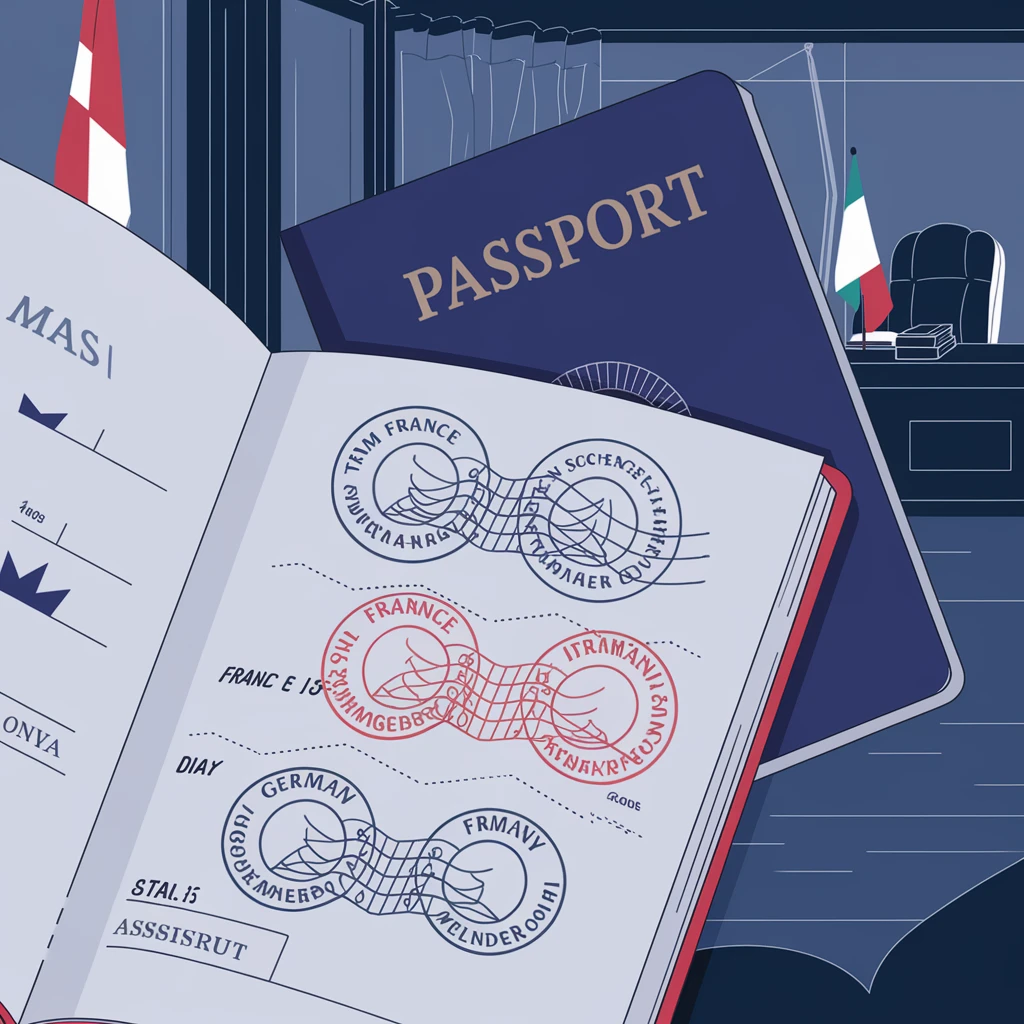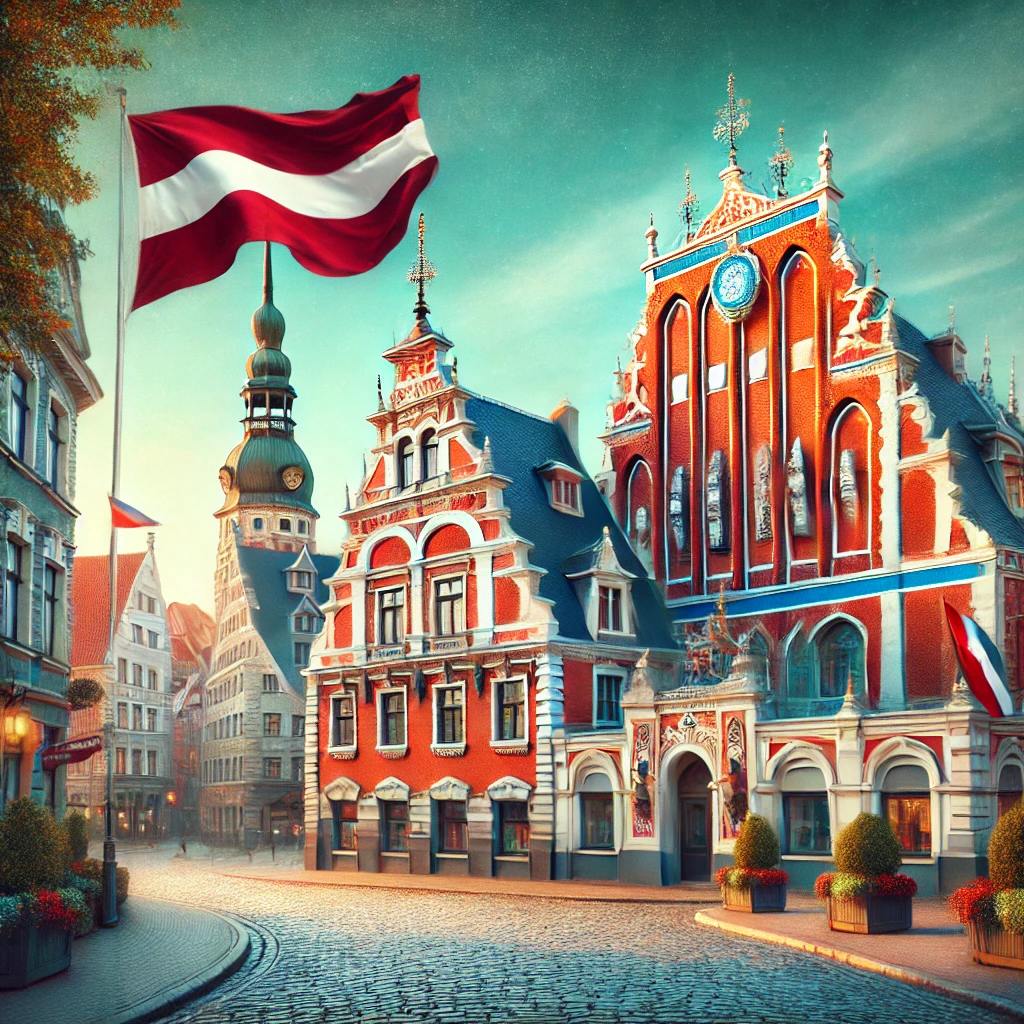Multiple Entry Schengen Visa
Multiple Entry Schengen Visa


7 Eki 2024
7 Eki 2024
If you're a frequent traveller, especially within the Schengen zone, a long-term Schengen tourist visa (also known as a multiple-entry Schengen visa) is incredibly convenient. This visa is typically issued for 1 year, 2 years, or 5 years and allows you to enter and leave any country in the Schengen Area multiple times during its validity period.
What is a Multiple-Entry Tourist Visa?
A multiple-entry Schengen visa gives travellers the flexibility to enter and leave the Schengen Area as many times as needed, provided each stay does not exceed 90 days within any 180-day period. Even with a 5 year multiple entry Schengen Visa, you cannot overstay beyond the 90-day limit within this period. The same rule applies for all long visas, as 1 year multiple entry Schengen visa too.
For example, with a one year Schengen visa, you can travel multiple times throughout the year without having to reapply. This visa is ideal for both business travelers and frequent tourists who need flexibility in their schedules. However, remember that even though the visa is long-term, you are restricted to 90 days of stay within the Schengen zone during any 180-day timeframe.
Multi Entry Visas vs Long Stay Schengen Visa
Long Stay visas or D category visas or national visas are designed for individuals who plan to stay in a Schengen country for a longer period. Unlike tourist visas, which limit your stay to 90 days within a 180-day period, a D visa allows you to reside in a country for purposes such as studying, working, or even reunification with family member. Schengen work visa (or Schengen Visa work permit) are the most popular types of D visas. Visa requirements for this type are different from tourist visas, because it's another Schengen Visa category.
Eligibility for Long-Term Tourist Visas
To be eligible for a multi entry Schengen visa, applicants generally need a clean travel history and prior experience with Schengen visas, such as a single-entry visa or short-stay Schengen visa. If you've complied with the terms of your previous visa, you’re more likely to qualify for a 5-year Schengen visa or a multiple-entry visa for a shorter term like 1 or 2 years.
Applicants should also be prepared to demonstrate their financial capacity to cover multiple trips. In addition, having a clear purpose for frequent visits can strengthen your application for a multi-entry Schengen visa. For more specific guidelines, visit the Schengen Visa Information portal.
Duration of Schengen Visa
The Schengen visa validity—whether it's dates of the trip, 1 year, 2 years, or 5 years—is determined by the Schengen country consulate processing your application. Factors that affect this include your nationality, financial stability, and travel history. A traveller with an extensive record of trips might be granted a 5 year Schengen visa, whereas someone with less experience could receive a 1 year Schengen visa or Schengen Visa 2 year multiple entry. You can see how long Schengen Visa valid on your visa sticker.
Regardless of the visa's length, the rule remains that you cannot stay in the Schengen Area for more than 90 days within a 180-day period. For more detailed visa durations, see this Visa Guide.
Maximising Your Chances for a Multi Entry Schengen Visa
To improve your chances of securing a long duration Schengen visa, follow these tips:
Eligibility:
A key factor in qualifying for a long-term visa is prior travel experience in the Schengen Area, preferably with a short stay visa or a one entry Schengen visa. Consulates favor applicants with a proven record of compliance with visa rules, such as the maximum 90 days stay rule.Consistency:
Reapplying from the same country where you’ve been previously issued a Schengen visa can help you secure a longer-duration visa, such as a 5-year multiple-entry Schengen visa.Present a Detailed Itinerary:
Show the consulate that you plan multiple trips by providing a detailed travel itinerary. The more compelling your case for needing frequent access to the Schengen zone, the higher your chances of obtaining a multi-entry Schengen visa.Sufficient Financial Resources:
Be prepared to submit financial documents such as bank statements to prove you can support multiple trips. Financial stability is a crucial requirement for being granted a long-term Schengen visa.Purchase Long-Term Travel Insurance:
Opting for a long-term travel insurance policy (such as one that covers a year or more) not only makes financial sense but also shows that you are prepared for multiple trips. This can positively impact your chances of getting a multiple-entry Schengen visa.Choose the Right Country:
Some Schengen countries are known for being more lenient in granting long-term visas. For example, France and the Netherlands often issue long-term visas more readily. Research the tendencies of the specific country to which you are applying, and align your application accordingly.Prove Your Intent to Return:
One of the primary concerns consulates have is whether applicants will overstay their visa. You must demonstrate strong ties to your home country or residence. Make sure your passport and residence permit (if applicable) are valid for a long period. Showing that you intend to return to your home country can be a deciding factor in whether you get approved for a 5-year Schengen visa.
Conclusion
A multiple-entry Schengen visa offers exceptional convenience for those who frequently travel within the Schengen Area. Whether it's a 1-year or 5-year Schengen visa, it allows flexibility and ease for tourists or business travellers alike. Just remember, despite the visa's validity period, the 90-day limit within any 180-day period still applies. This visa does not grant the right to work or reside permanently in any Schengen country, but it does make short stays much simpler and more convenient for frequent travellers.
If you're a frequent traveller, especially within the Schengen zone, a long-term Schengen tourist visa (also known as a multiple-entry Schengen visa) is incredibly convenient. This visa is typically issued for 1 year, 2 years, or 5 years and allows you to enter and leave any country in the Schengen Area multiple times during its validity period.
What is a Multiple-Entry Tourist Visa?
A multiple-entry Schengen visa gives travellers the flexibility to enter and leave the Schengen Area as many times as needed, provided each stay does not exceed 90 days within any 180-day period. Even with a 5 year multiple entry Schengen Visa, you cannot overstay beyond the 90-day limit within this period. The same rule applies for all long visas, as 1 year multiple entry Schengen visa too.
For example, with a one year Schengen visa, you can travel multiple times throughout the year without having to reapply. This visa is ideal for both business travelers and frequent tourists who need flexibility in their schedules. However, remember that even though the visa is long-term, you are restricted to 90 days of stay within the Schengen zone during any 180-day timeframe.
Multi Entry Visas vs Long Stay Schengen Visa
Long Stay visas or D category visas or national visas are designed for individuals who plan to stay in a Schengen country for a longer period. Unlike tourist visas, which limit your stay to 90 days within a 180-day period, a D visa allows you to reside in a country for purposes such as studying, working, or even reunification with family member. Schengen work visa (or Schengen Visa work permit) are the most popular types of D visas. Visa requirements for this type are different from tourist visas, because it's another Schengen Visa category.
Eligibility for Long-Term Tourist Visas
To be eligible for a multi entry Schengen visa, applicants generally need a clean travel history and prior experience with Schengen visas, such as a single-entry visa or short-stay Schengen visa. If you've complied with the terms of your previous visa, you’re more likely to qualify for a 5-year Schengen visa or a multiple-entry visa for a shorter term like 1 or 2 years.
Applicants should also be prepared to demonstrate their financial capacity to cover multiple trips. In addition, having a clear purpose for frequent visits can strengthen your application for a multi-entry Schengen visa. For more specific guidelines, visit the Schengen Visa Information portal.
Duration of Schengen Visa
The Schengen visa validity—whether it's dates of the trip, 1 year, 2 years, or 5 years—is determined by the Schengen country consulate processing your application. Factors that affect this include your nationality, financial stability, and travel history. A traveller with an extensive record of trips might be granted a 5 year Schengen visa, whereas someone with less experience could receive a 1 year Schengen visa or Schengen Visa 2 year multiple entry. You can see how long Schengen Visa valid on your visa sticker.
Regardless of the visa's length, the rule remains that you cannot stay in the Schengen Area for more than 90 days within a 180-day period. For more detailed visa durations, see this Visa Guide.
Maximising Your Chances for a Multi Entry Schengen Visa
To improve your chances of securing a long duration Schengen visa, follow these tips:
Eligibility:
A key factor in qualifying for a long-term visa is prior travel experience in the Schengen Area, preferably with a short stay visa or a one entry Schengen visa. Consulates favor applicants with a proven record of compliance with visa rules, such as the maximum 90 days stay rule.Consistency:
Reapplying from the same country where you’ve been previously issued a Schengen visa can help you secure a longer-duration visa, such as a 5-year multiple-entry Schengen visa.Present a Detailed Itinerary:
Show the consulate that you plan multiple trips by providing a detailed travel itinerary. The more compelling your case for needing frequent access to the Schengen zone, the higher your chances of obtaining a multi-entry Schengen visa.Sufficient Financial Resources:
Be prepared to submit financial documents such as bank statements to prove you can support multiple trips. Financial stability is a crucial requirement for being granted a long-term Schengen visa.Purchase Long-Term Travel Insurance:
Opting for a long-term travel insurance policy (such as one that covers a year or more) not only makes financial sense but also shows that you are prepared for multiple trips. This can positively impact your chances of getting a multiple-entry Schengen visa.Choose the Right Country:
Some Schengen countries are known for being more lenient in granting long-term visas. For example, France and the Netherlands often issue long-term visas more readily. Research the tendencies of the specific country to which you are applying, and align your application accordingly.Prove Your Intent to Return:
One of the primary concerns consulates have is whether applicants will overstay their visa. You must demonstrate strong ties to your home country or residence. Make sure your passport and residence permit (if applicable) are valid for a long period. Showing that you intend to return to your home country can be a deciding factor in whether you get approved for a 5-year Schengen visa.
Conclusion
A multiple-entry Schengen visa offers exceptional convenience for those who frequently travel within the Schengen Area. Whether it's a 1-year or 5-year Schengen visa, it allows flexibility and ease for tourists or business travellers alike. Just remember, despite the visa's validity period, the 90-day limit within any 180-day period still applies. This visa does not grant the right to work or reside permanently in any Schengen country, but it does make short stays much simpler and more convenient for frequent travellers.
Related posts



Schengen Visa for Slovakia | Book Slovak Visa Appointment in the UK



Schengen Visa for Poland | Book Polish Visa Appointment in the UK



Schengen Visa for Greece | Book Greek Visa Appointment in the UK



Schengen Visa for Bulgaria | Book Bulgarian Visa Appointment in the UK



Schengen Visa for Sweden | Book Swedish Visa Appointment in the UK



Schengen Visa for Latvia | Book Latvian Visa Appointment in the UK



Schengen Visa for Slovenia | Book Slovenian Visa Appointment in the UK



Schengen Visa for Cyprus | Book Cypriot Visa Appointment in the UK



Schengen Visa for Lithuania | Book Lithuanian Visa Appointment in the UK



Schengen Visa for Estonia | Book Estonian Visa Appointment in the UK
Related posts
Related posts